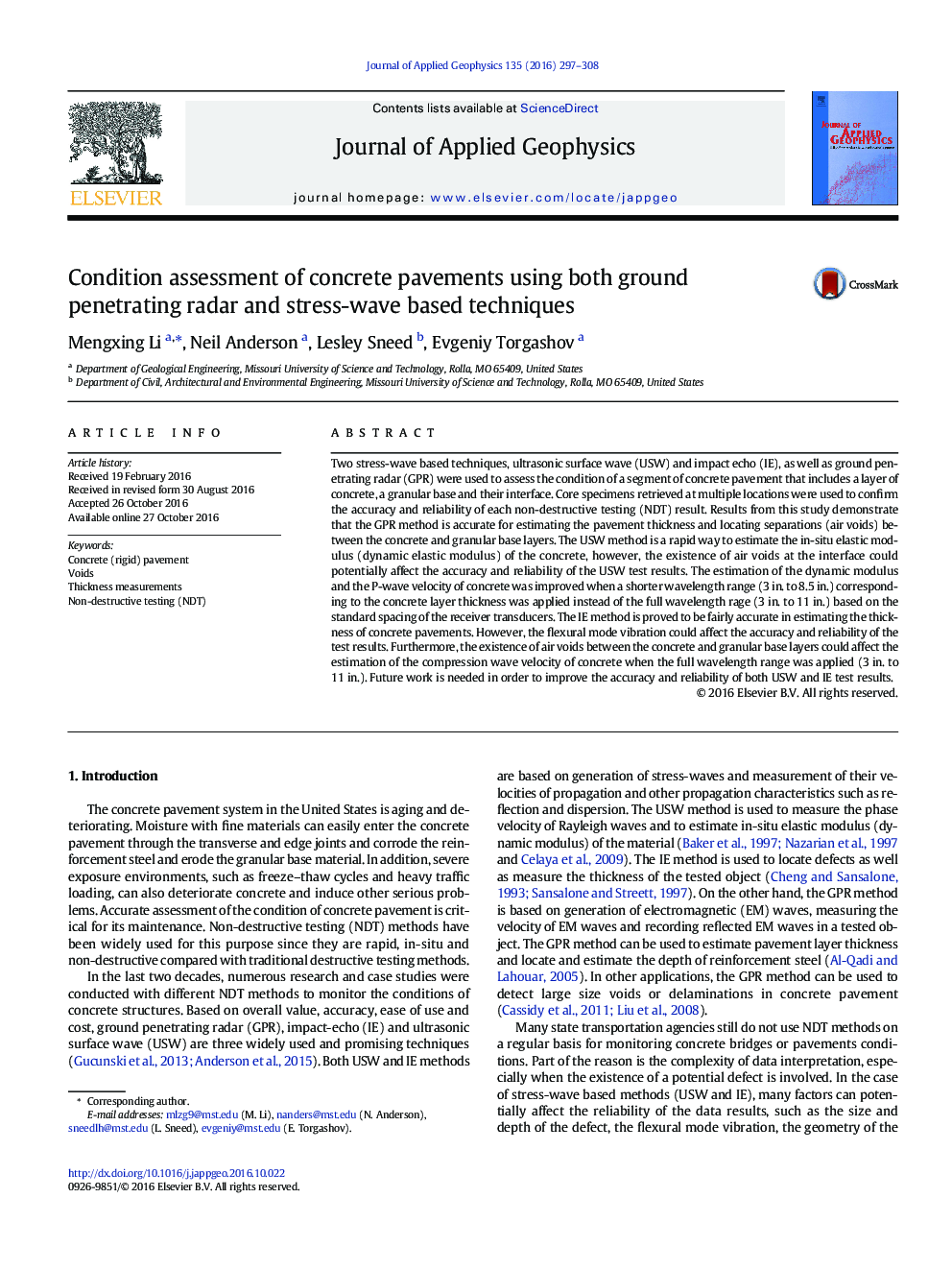| کد مقاله | کد نشریه | سال انتشار | مقاله انگلیسی | نسخه تمام متن |
|---|---|---|---|---|
| 4739713 | 1641116 | 2016 | 12 صفحه PDF | دانلود رایگان |
• Thin air-filled voids (≤ 0.5 in.) formed at the concrete-granular base interface were successfully characterized by a combination of non-destructive testing (NDT) methods and confirmed by core specimens retrieved at nearby locations.
• The accuracy and reliability of both the ultrasonic surface wave (USW) and impact echo (IE) data could be affected by air voids identified between the concrete and granular base layers.
• GPR is proved to be an accurate method for detecting thin air-filled voids (≤ 0.5 in.) formed at the concrete-granular base interface and measuring the concrete pavement thickness.
Two stress-wave based techniques, ultrasonic surface wave (USW) and impact echo (IE), as well as ground penetrating radar (GPR) were used to assess the condition of a segment of concrete pavement that includes a layer of concrete, a granular base and their interface. Core specimens retrieved at multiple locations were used to confirm the accuracy and reliability of each non-destructive testing (NDT) result. Results from this study demonstrate that the GPR method is accurate for estimating the pavement thickness and locating separations (air voids) between the concrete and granular base layers. The USW method is a rapid way to estimate the in-situ elastic modulus (dynamic elastic modulus) of the concrete, however, the existence of air voids at the interface could potentially affect the accuracy and reliability of the USW test results. The estimation of the dynamic modulus and the P-wave velocity of concrete was improved when a shorter wavelength range (3 in. to 8.5 in.) corresponding to the concrete layer thickness was applied instead of the full wavelength rage (3 in. to 11 in.) based on the standard spacing of the receiver transducers. The IE method is proved to be fairly accurate in estimating the thickness of concrete pavements. However, the flexural mode vibration could affect the accuracy and reliability of the test results. Furthermore, the existence of air voids between the concrete and granular base layers could affect the estimation of the compression wave velocity of concrete when the full wavelength range was applied (3 in. to 11 in.). Future work is needed in order to improve the accuracy and reliability of both USW and IE test results.
Journal: Journal of Applied Geophysics - Volume 135, December 2016, Pages 297–308
